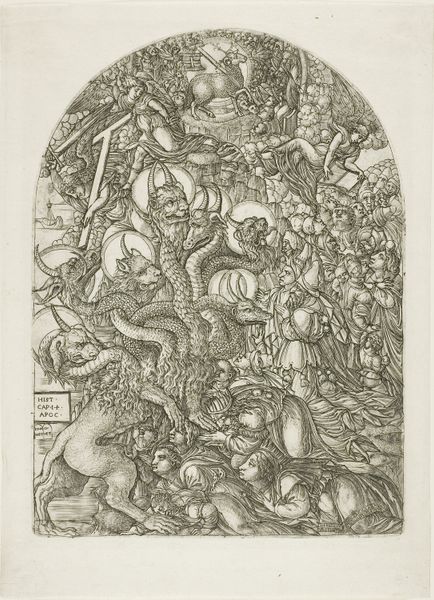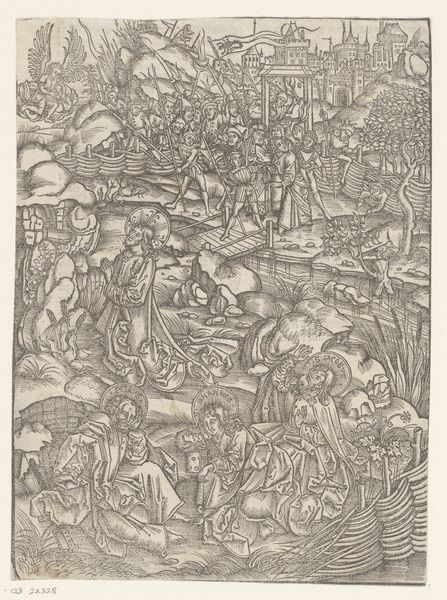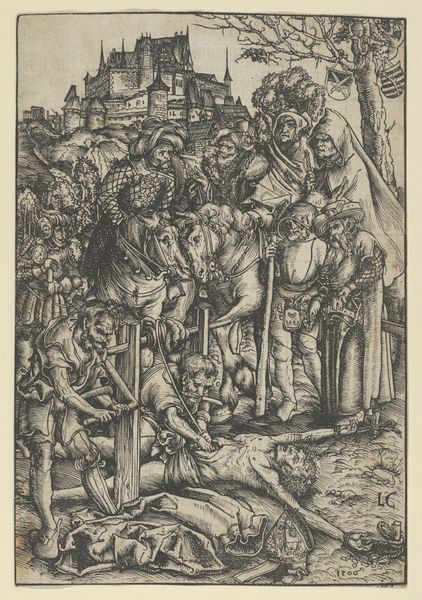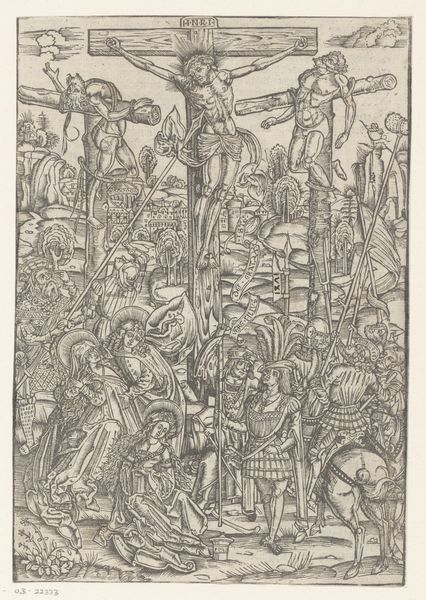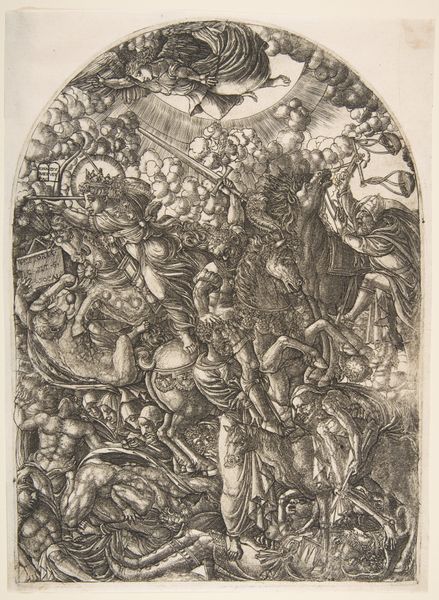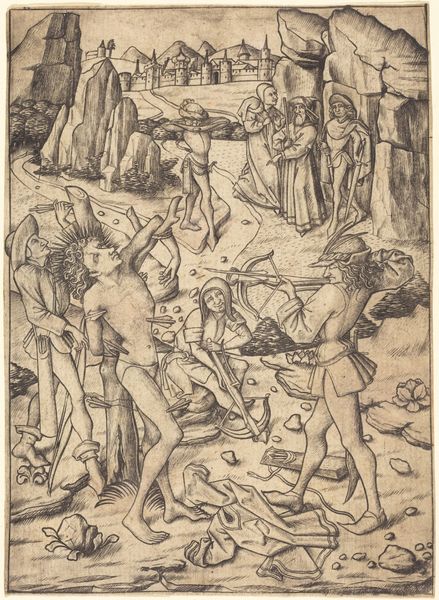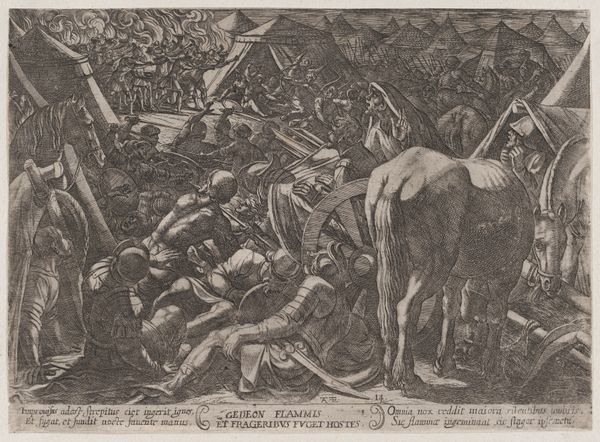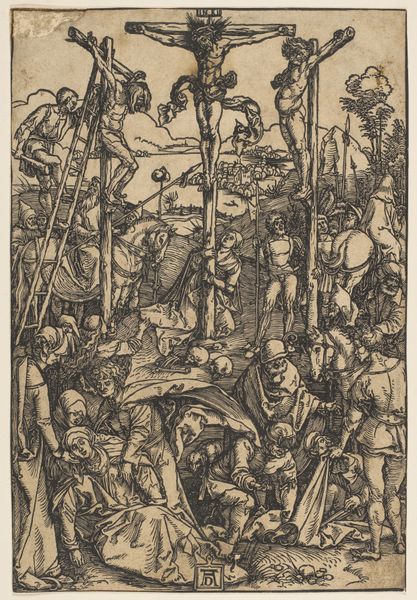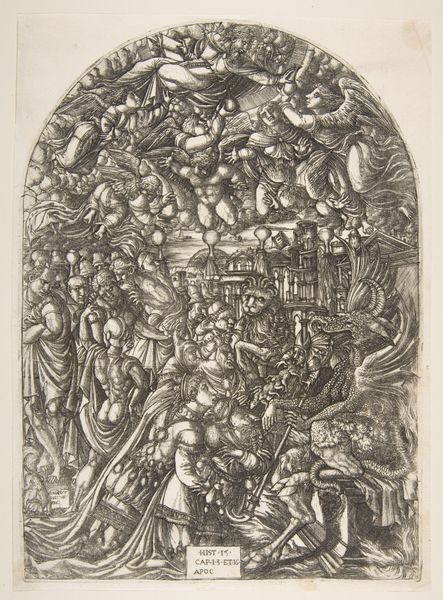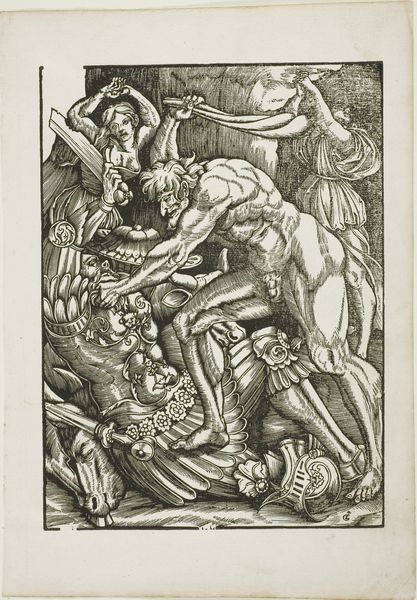
print, etching, engraving
# print
#
etching
#
mannerism
#
figuration
#
11_renaissance
#
line
#
history-painting
#
engraving
Dimensions: height 450 mm, width 355 mm
Copyright: Rijks Museum: Open Domain
Editor: This is "Strijd tussen Lapithen en Centauren, linker deel" by Cornelis Bos, created around 1550. It’s an etching, falling into the mannerism style, and depicts the battle between the Lapiths and Centaurs. It looks incredibly chaotic, a dense mass of figures fighting! What strikes you most when you look at this piece? Curator: The density certainly grabs your attention. For me, it speaks to the 16th-century obsession with classical mythology and its use as a political allegory. Mannerism often twisted classical forms. Notice how the muscular bodies are almost exaggerated to the point of grotesque. Given its period, how do you think the audience might perceive the battle being portrayed? Editor: Well, the sheer violence is hard to ignore. Maybe they would have interpreted the Centaurs as representing disorder or barbarism threatening civilized society, which in turn allows the Lapiths to be heroes. Curator: Precisely. Prints like this served to disseminate ideals, power structures, and narratives throughout society. Remember, this print wouldn't have existed in a vacuum; it would be traded, collected and seen by people with varying opinions and personal contexts, allowing multiple ideas and interpretations. Editor: So, it's less about the actual myth and more about how it reinforces a specific societal viewpoint through distribution? Curator: Exactly! The choice to depict this specific scene, the way figures are styled, and making the print medium affordable -- it’s all interconnected to public opinion and cultural values of the time. Now what do we do with that knowledge? Editor: This really highlights how art is never just aesthetic; it’s actively participating in a much wider cultural dialogue. Curator: Precisely. Analyzing the socio-political factors in art enhances the whole viewing experience.
Comments
No comments
Be the first to comment and join the conversation on the ultimate creative platform.
